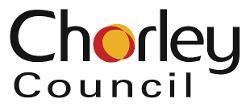Nature and Biodiversity
We continue to work to improve biodiversity across the borough in a number of ways.
Tree planting
Together with our partners, landowners and residents, we are working towards our target of planting 116k trees in Chorley by 2025 - that's one for every resident!
Read our Emergency Tree Plan (PDF) [767KB]
Tree giveaway
Our last tree giveaway was on Saturday 17 February. We will announce plans for future events on our social media and website in due course.
Sign up for your free tree
Your saplings
If you have any small saplings growing in a pot that need to be planted on, we have a tree nursery that is waiting to be filled at The Willows, Eaves Green Chorley, PR7 3RQ. Please go along when you can, take a trowel and plant it in the raised beds. It will then be relocated with big enough to a new home close by.
Wildflower Meadows
For 2022 we have expanded our mini meadows programme by attempting to create 55 wildflower meadows (including the re-sowing of the successful sites from 2021)
As well as adding colour and interest, these meadows provide an invaluable food and habitat sources for insects and pollinators and also help to:
- reduce the carbon footprint
- introduce more ecological practices
- add value to landscape and natural spaces
- brings wildlife back into town
Many of these areas are situated on main routes across the borough so that they can be enjoyed by as many residents as possible.
Why not try creating a wildflower meadow at home
Wildlife corridors
Often situated in verges of the main thoroughfares of Chorley, Wildlife Corridors play a vital role in improving biodiversity.
Wildlife Corridors help to bridge the gap between habitats which helps to restore and preserve biodiversity, allowing movement between important habitats to maintain genetic diversity in wildlife populations. It is important that we support insects at all stages of their life cycle and plants found in wildlife corridors such as docks, sorrels and thistles are important larval food plants. These corridors also provide an opportunity for airborne, pollinating insects to move around by flying from one to another.
To help support this, grass cutting in these areas is reduced as part of our maintenance programme and also to allow any natural wildflowers within the seed bank to flourish.
We will continue to regularly maintain the verge area immediately next to the road or footpaths so we can maintain visibility and safety for motorists but otherwise let nature take its course and give them a helping hand by supplementing them by planting bulbs.
We have planted a further 8000 wildflower bulbs this autumn within certain areas to introduce greater diversity whilst adding colour and intrigue to these vital havens for insects and pollinators.
Bird Boxes
At certain times of the year, our team or Rangers make and install additional bird boxes in some of our woodland areas such as Yarrow Valley Country Park.
Useful resources
If you've like to get involved at home, here are some useful resources that may help:




